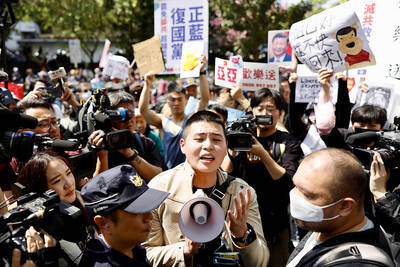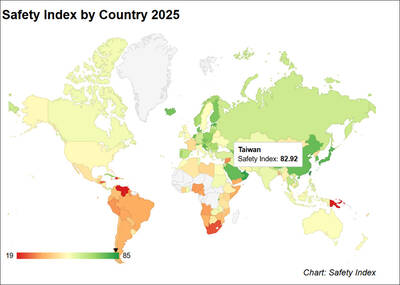Cocaine sent Juan Rivera Cabrera to prison. Coffee got him out -- at least for a few hours each day.
Rivera, serving five to seven years for selling cocaine, is among 100 inmates who travel each morning to Puerto Rico's lush highlands to pick coffee beans.
The "coffee convict" brigade was begun last month because of worries that a shortage of pickers might result in up to 30 percent of this year's crop going unharvested before the beans started shriveling and blackening toward the end of the season around New Year's.
"We have the technology, the land and the coffee, but what we don't have are workers to pick the crop," said Jose Fabre Laboy, Puerto Rico's agriculture secretary.
Working with the Department of Corrections, Fabre hopes to enlist an additional 750 coffee pickers from adult and juvenile prisons for next year's harvest.
The voluntary program has drawn praise from farmers who see it as a novel solution to the labor shortage -- and criticism from others who feel the prisoners work too slow.
Each morning, the inmates rise before dawn, pile into buses and drive into the fog-cloaked mountains of western Puerto Rico, the heart of coffee country. On a recent morning, one group went to a large coffee estate in Yauco, 140km southwest of the capital, San Juan.
Clad in brown uniforms, they waded through rows of coffee plants, plucking ripe, red beans and dropping them into buckets dangling from their necks -- all under the fixed gaze of burly prison guards with pistols.
"It was hard the first time, because I had never picked coffee before," Rivera said. "But I'm getting better at it."
Inmates are paid the same as regular coffee pickers -- US$5 per 13km bucket of ripe beans -- and get 10 days taken off their sentences for each month of work.
Puerto Rico was among the world's leading coffee exporters in the 19th century, then hurricanes and increased competition hurt the business. Today, nearly all Puerto Rican coffee stays on the island, where many people start their day with a "cafe con leche" -- coffee with milk.
William Cintron, a former mayor of Yauco and one of 40 coffee farmers who volunteered to use the prisoners, said the labor shortage hurts the coffee industry's growth by limiting how much farmers can plant. He wants even more prisoners used.
"We can't plant more coffee without manual labor, and the manual labor is in the prisons," he said.
But Jorge Gonzalez, mayor of the coffee-growing town of Jayuya, said inmates are too slow at picking the beans, which over-ripen if they are not harvested quickly.
He wants to bring in pickers from the Dominican Republic instead of using inmates.
"Foreign workers are the salvation and the solution for the coffee industry," he said.
This US territory in the Caribbean has just 10,000 coffee pickers -- 5,000 less than needed. The number drops each year as workers quit to take less strenuous jobs in manufacturing and other sectors that pay more than triple the average wages for coffee pickers.
Few prisoners can pick more than 68kg of beans in a five-hour day, a fraction of what a skilled bean picker can pluck. Skilled pickers earn on average US$50 a day -- twice what most prisoners make -- although really speedy ones make up to US$100.
Fabre said there have been few complaints about the prisoners. None has tried to escape, and the ones picking the beans in Yauco said they enjoyed it.
"It takes away the boredom of being locked up. It's a form of therapy for us," said Andre Rivera, a 24-year-old convicted armed robber with a wide grin and tattoos snaking up his arms.
"It's been a tremendous experience," chimed in Juan Coyazo, 31, who is serving a seven-year sentence for assault.
"We're in the mountains of our Puerto Rico and we're proud to be picking the fruit of our soil," he said.

ENDEAVOR MANTA: The ship is programmed to automatically return to its designated home port and would self-destruct if seized by another party The Endeavor Manta, Taiwan’s first military-specification uncrewed surface vehicle (USV) tailor-made to operate in the Taiwan Strait in a bid to bolster the nation’s asymmetric combat capabilities made its first appearance at Kaohsiung’s Singda Harbor yesterday. Taking inspiration from Ukraine’s navy, which is using USVs to force Russia’s Black Sea fleet to take shelter within its own ports, CSBC Taiwan (台灣國際造船) established a research and development unit on USVs last year, CSBC chairman Huang Cheng-hung (黃正弘) said. With the exception of the satellite guidance system and the outboard motors — which were purchased from foreign companies that were not affiliated with Chinese-funded

PERMIT REVOKED: The influencer at a news conference said the National Immigration Agency was infringing on human rights and persecuting Chinese spouses Chinese influencer “Yaya in Taiwan” (亞亞在台灣) yesterday evening voluntarily left Taiwan, despite saying yesterday morning that she had “no intention” of leaving after her residence permit was revoked over her comments on Taiwan being “unified” with China by military force. The Ministry of the Interior yesterday had said that it could forcibly deport the influencer at midnight, but was considering taking a more flexible approach and beginning procedures this morning. The influencer, whose given name is Liu Zhenya (劉振亞), departed on a 8:45pm flight from Taipei International Airport (Songshan airport) to Fuzhou, China. Liu held a news conference at the airport at 7pm,

GRIDLOCK: The National Fire Agency’s Special Search and Rescue team is on standby to travel to the countries to help out with the rescue effort A powerful earthquake rocked Myanmar and neighboring Thailand yesterday, killing at least three people in Bangkok and burying dozens when a high-rise building under construction collapsed. Footage shared on social media from Myanmar’s second-largest city showed widespread destruction, raising fears that many were trapped under the rubble or killed. The magnitude 7.7 earthquake, with an epicenter near Mandalay in Myanmar, struck at midday and was followed by a strong magnitude 6.4 aftershock. The extent of death, injury and destruction — especially in Myanmar, which is embroiled in a civil war and where information is tightly controlled at the best of times —

Taiwan was ranked the fourth-safest country in the world with a score of 82.9, trailing only Andorra, the United Arab Emirates and Qatar in Numbeo’s Safety Index by Country report. Taiwan’s score improved by 0.1 points compared with last year’s mid-year report, which had Taiwan fourth with a score of 82.8. However, both scores were lower than in last year’s first review, when Taiwan scored 83.3, and are a long way from when Taiwan was named the second-safest country in the world in 2021, scoring 84.8. Taiwan ranked higher than Singapore in ninth with a score of 77.4 and Japan in 10th with